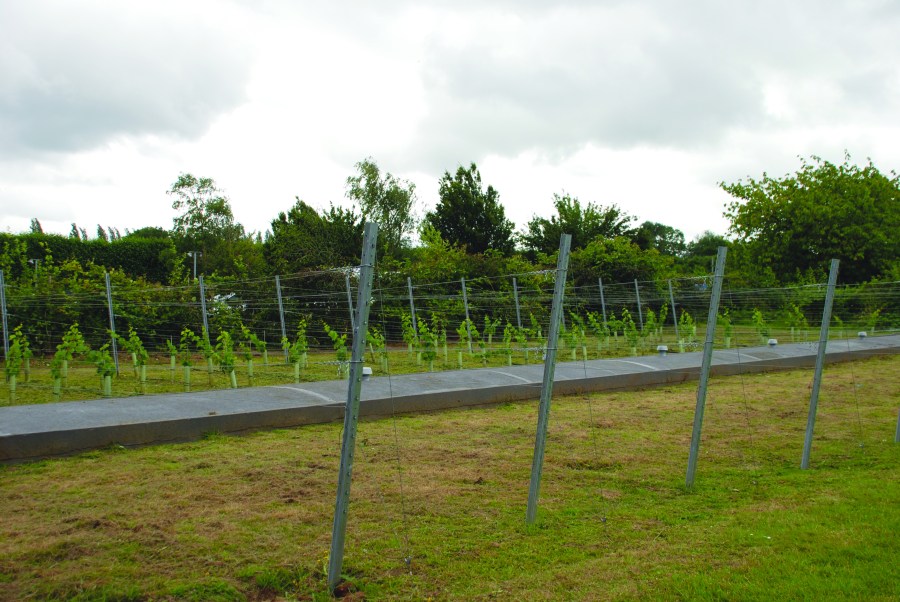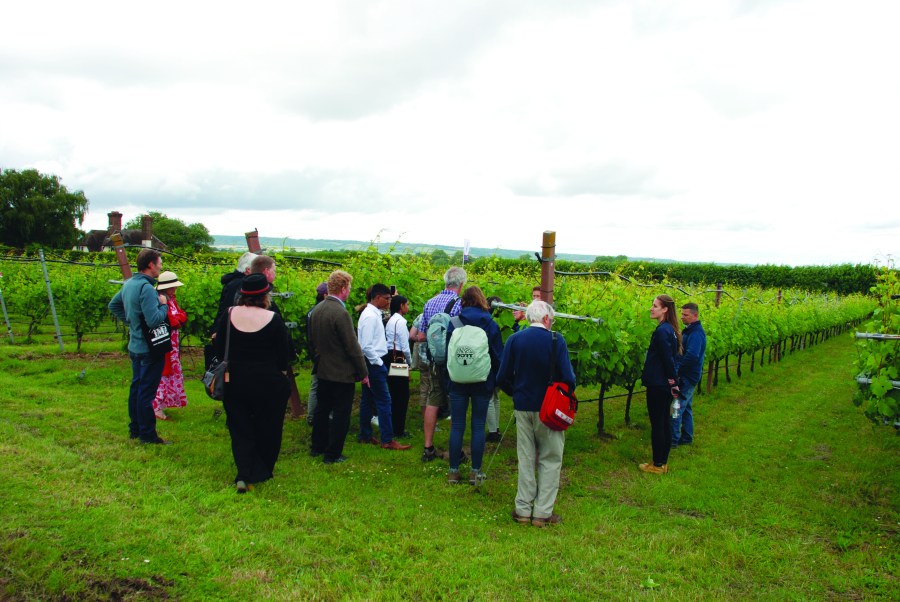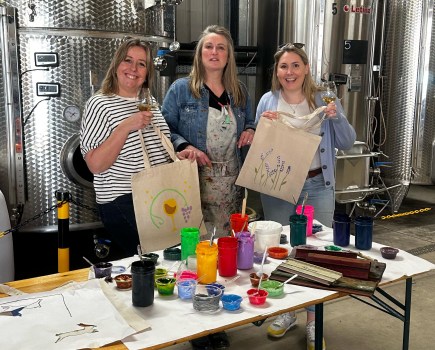At midday there was a tour of the research vineyards and there were so many participants it was necessary to split into two groups in order to fully get the benefit of the tour. Visitors were able to not just visit the vineyards but also the rhizo lab. The underground facility (which looks a little like a nuclear bunker) allows viewing of the underground roots systems of plants and is unique in the UK. It dates from the 1930’s.
The vines were planted in 2023 with the trellising system provided by VineWorks. There are two plantings of Chardonnay, two of Pinot Noir and the PIWI variety Vidoc. There are plans for the planting to be replicated in 2024 on the opposite side of the rhizo lab.
From the surface it is impossible to appreciate just what is available below ground. There are 24 viewing windows. Once established the root system of the vines which is expected to reach a depth of approximately 90cm will be visible on both sides of the tunnel.
This amazing new facility will allow studies to be conducted on the root systems of the vines and includes access points to allow soil samples to be taken. The possibilities are endless and Dr Flora O’Brien explained that it may be possible to use dyes to emphasise how root structures are working.
The studies will also look at how different management practices such as cover crops influence establishment, growth, carbon sequestration and soil organic matter content. The lab will also allow scientists to study the influence of different rootstocks on clones measuring vigour, bunch weight etc.
In order to ensure that the impact of light on the root structure of the vines is kept to a minimum there is the option for scientists to use red lights during extended working periods. There are no root structures available to view at the moment, it is still possible to get a glimpse of the ragstone soil composition and perhaps the occasional spider.
The tour moved from the underground lab to the research vineyard where Dr Belinda Kemp provided a brief glimpse at some of the work being undertaken to help growers and winemakers. The vineyard is currently in the third year of research into the impact of cover crops. “This is significant because three years of data is the minimum level of data required to be able to publish the research,” said Dr Kemp.
Dr Kemp explained that initial observations are quite positive with vines planted next to fava beans indicating an increase in Yeast Assimilable Nitrogen (YAN). There were 15 rows of Chardonnay and 15 rows of Pinot Noir planted in 2024. The vineyard also has 16 rows of the PIWI variety Divico. “Disease resistant does not mean resistant to everything,” warned Dr Kemp with a smile. The difficulties of scientific research are emphasised as
Dr Kemp told the tour audience that it is not possible to use data from the end rows or the end bays as these are classed as outliers and can skew the data.
One of the current research topics is Spur versus Cane pruning on Chardonnay, Pinot Noir and Bacchus in the vineyard. The study is designed to provide growers with clear advice regarding what to expect in terms of maximum yield and quality.
Dr Belinda Kemp has previously worked in Canada and New Zealand “I have never seen such low levels of nitrogen as I am seeing here,” she said. “The soils are not really that low in nitrogen but the grapes are not getting that nitrogen.” Since nitrogen is a vital element for the survival of yeast this means that wineries are requiring greater quantities of nitrogen gas.
There is also a research winery at NIAB although this was not part of the tour. There is currently some work being undertaken on the formation of calcium tartrate crystals in wine. These crystals are not just a problem in the UK but have recently become a problem in Champagne Dr Kemp explained. The winery is also undertaking work to create the first de-alcoholised Kentish wine which is intriguing and just another example of the forward thinking and progressive research that is being undertaken at NIAB.

For more like this, sign up for the FREE Vineyard newsletter here and receive all the latest viticulture news, reviews and insight




